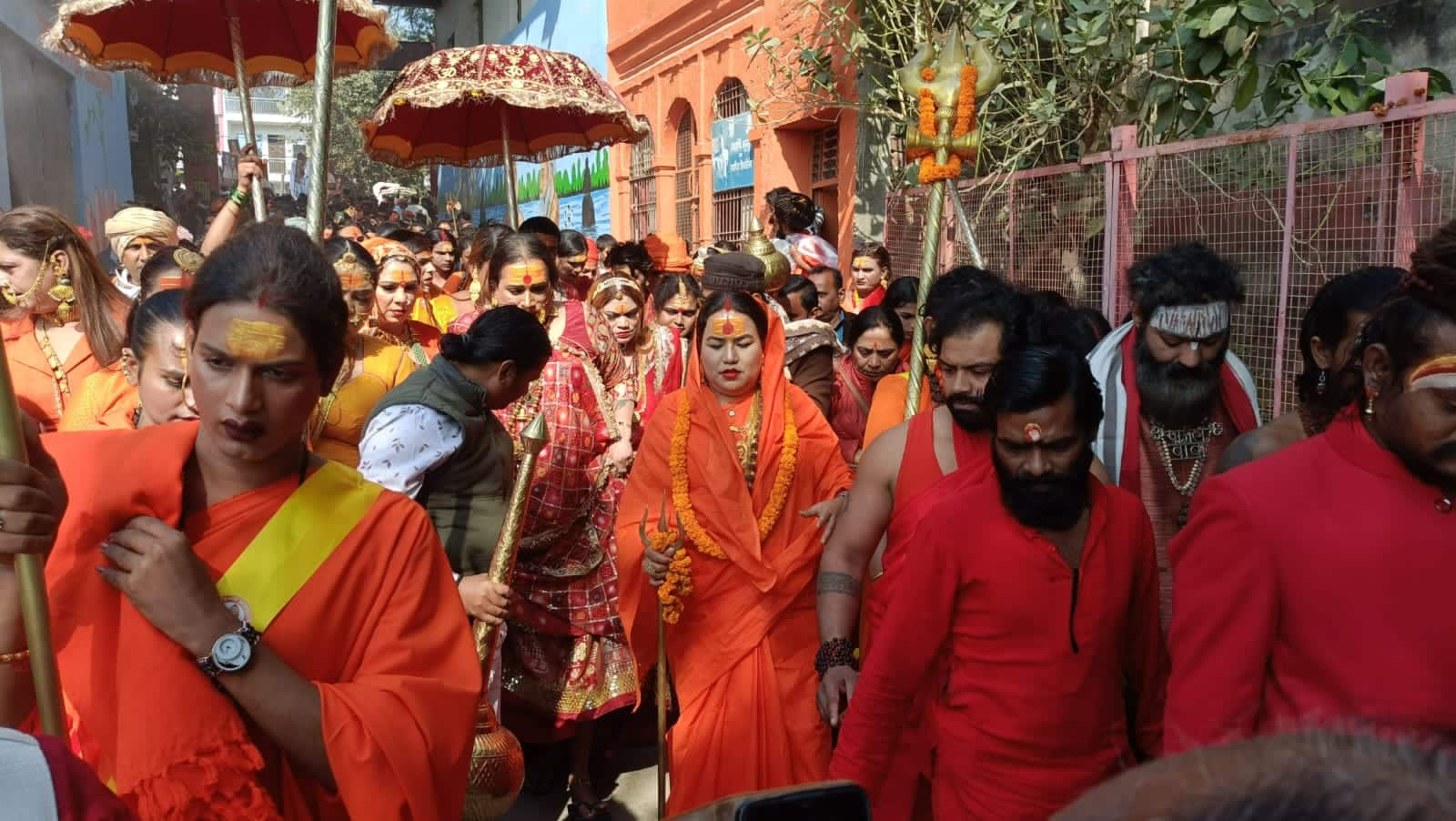



As the first rays of dawn touch the sacred confluence of the Ganga, Yamuna, and the mythical Saraswati in Prayagraj, thousands of workers begin their arduous task — shaping the sprawling grounds that will host the Maha Kumbh 2025. Their mission: to transform reclaimed land into a divine city ready to welcome millions of pilgrims.
Between the last Kumbh Mela in 2019 and the upcoming Maha Kumbh in 2025, the Ganga River shifted approximately 200 to 500 meters to the right, washing away 3,200 hectares of land. To ensure the event's grandeur, authorities undertook a colossal reclamation project, restoring the lost land and adding 800 hectares more, totaling 4,000 hectares.
"We are building something sacred," said Ramesh Yadav, a laborer. "When we see this land becoming a spiritual city, we feel like we are contributing to history."
Work has been relentless since October, with experts from the Irrigation Department collaborating with the Indian Institute of Technology, Guwahati, to channel the Ganga and create new ghats. "The erosion reduced available land significantly compared to 2019," said Mela Adhikari Vijay Kiran Anand. "Through dredging and channeling, we restored the banks, ensuring more space for pilgrims."
The tireless efforts of laborers working in two shifts ensure continuous progress. “When we finish our shift, the next team takes over,” said Rajesh Tiwari, a site supervisor. “It’s a 24-hour mission fueled by faith and devotion.”

With less than a month left before the first royal bath on Makar Sankranti (January 13), officials report that 90% of the work is either completed or nearing completion. "This is as prestigious a project for the Uttar Pradesh government as the consecration ceremony of the Ram Temple," said Additional District Magistrate (ADM) Vivek Chaturvedi.
The scale of the project is staggering: 150,000 toilets serviced by 15,000 sanitation workers, 67,000 LED lights and 2,000 solar lights illuminating the area, 12 km of temporary ghats, nine paved ghats, 30 pontoon bridges for seamless movement of devotees, and 1.5 million sq. ft. of murals and paintings adorning the mela grounds.
"Our team has worked tirelessly day and night," said Divisional Commissioner Vijay Vishwas Pant. "We are confident of accommodating an expected 40 crore devotees, as projected by Chief Minister Yogi Adityanath."
The administration has also created a robust support system, including a 100-bed central hospital, two 20-bed sub-center hospitals, 25 first-aid posts, and 125 ambulances. Banks, ATMs, food courts, and amusement corners will cater to pilgrims' financial, nutritional, and leisure needs.
"Each of the 25 sectors in the Kumbh ground will have essential facilities for seamless spiritual and daily activities," said Anand.
The administration has allocated land to 13 major akhadas (monastic orders), where seers have already hoisted their flags amid sacred chants. "We prioritized akhadas that were present in 2019," Anand added. "New applications are being reviewed based on available space."
Swami Chidanand Saraswati, head of Parmarth Niketan Ashram in Rishikesh, lauded the arrangements. "For 45 days, from Makar Sankranti to Shivratri, this divine confluence transforms into a city of faith—a living testament to nature's resilience and collective devotion," he said.
Pilgrims are also excited about the forthcoming spiritual gathering. "We are eager to witness the world's largest congregation of culture, religion, and spirituality," said businessman Deepak Goel. "It is a life-changing experience that one must see at least once."
As the countdown to Maha Kumbh 2025 begins, Prayagraj is steadily transforming into a vast, well-equipped spiritual hub ready to host millions, reaffirming its place as a center of religious devotion and cultural heritage.
Discover the latest Business News, Sensex, and Nifty updates. Obtain Personal Finance insights, tax queries, and expert opinions on Moneycontrol or download the Moneycontrol App to stay updated!
Find the best of Al News in one place, specially curated for you every weekend.
Stay on top of the latest tech trends and biggest startup news.